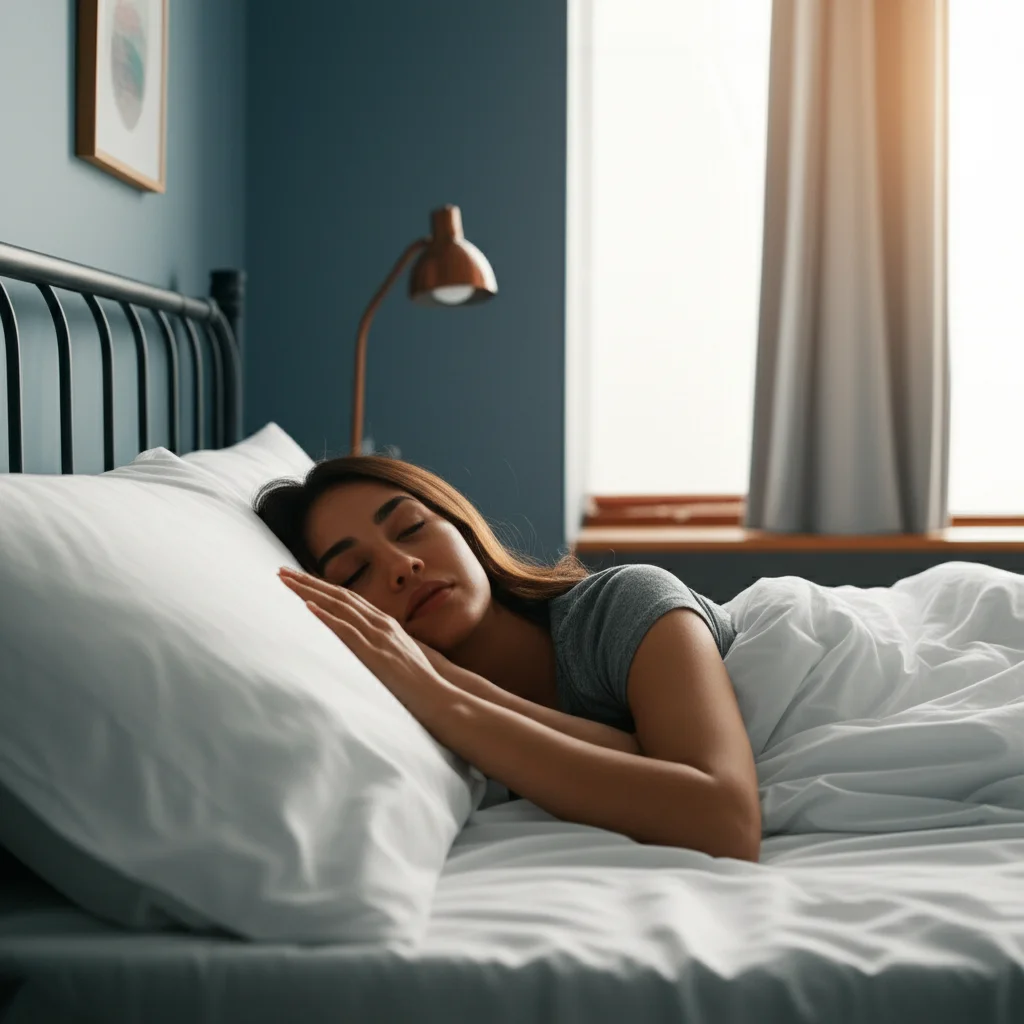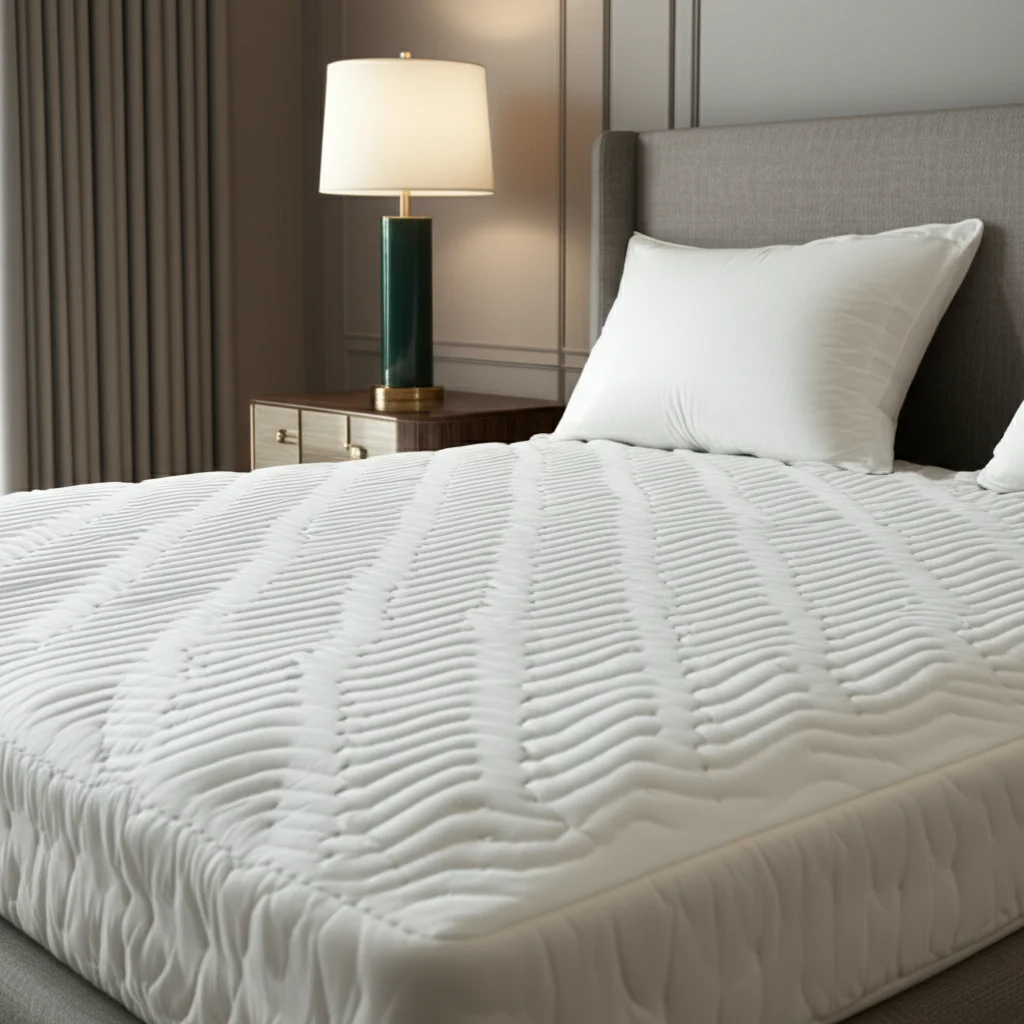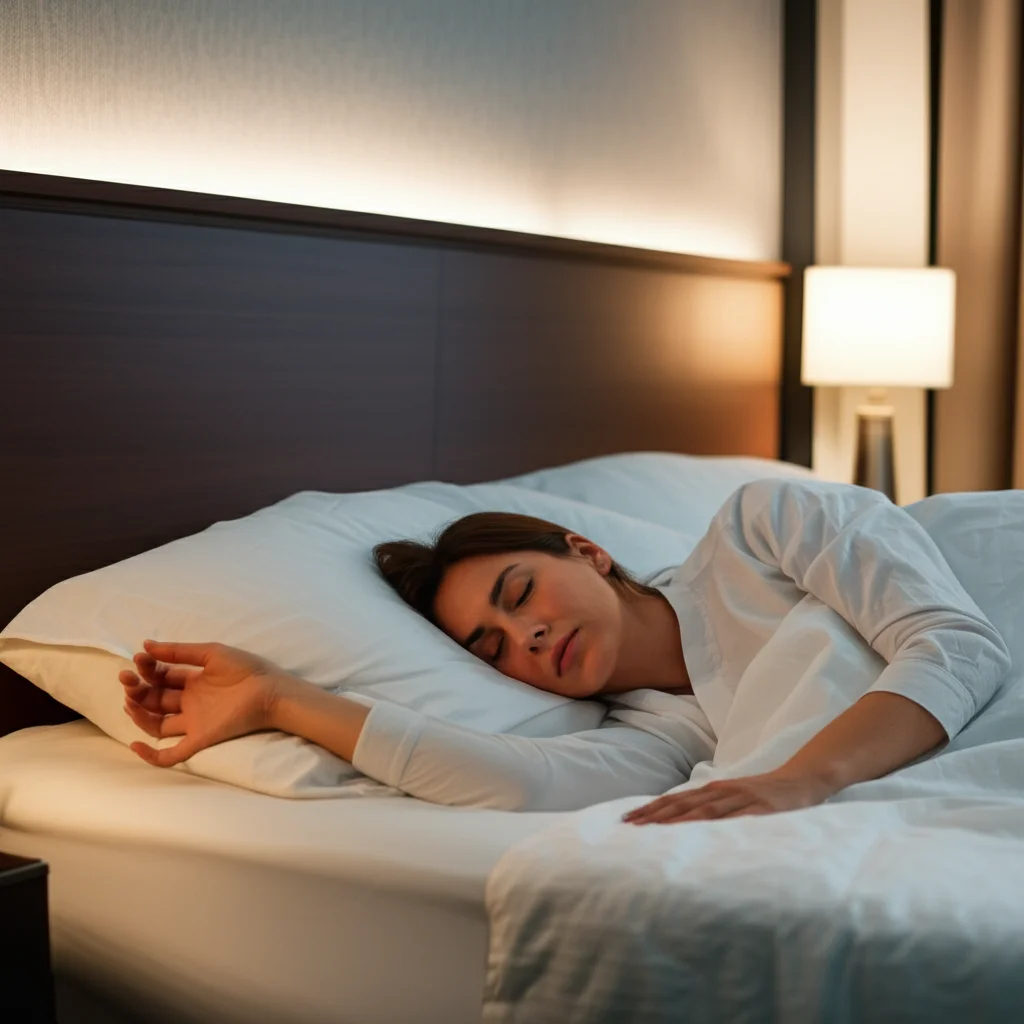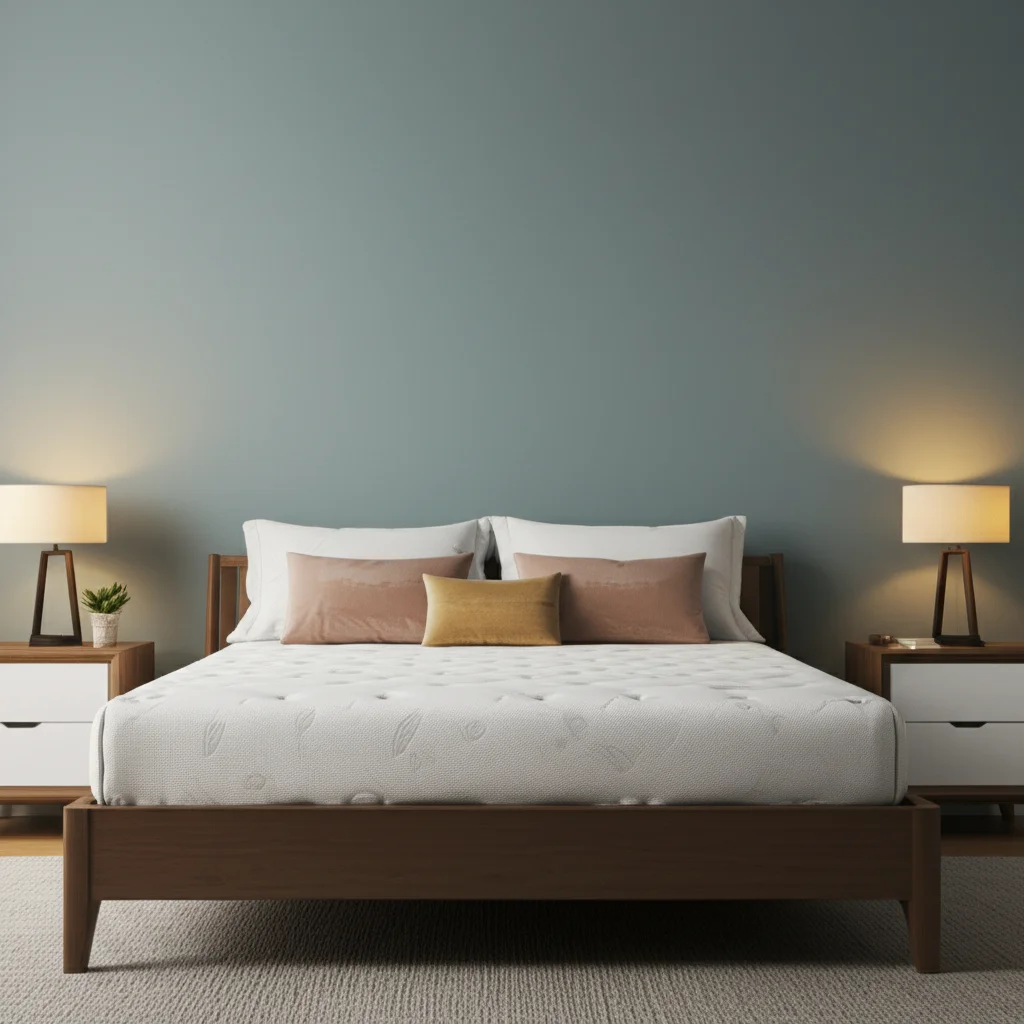· Katria Melrose · Sleep Health · 20 min read
How To Tell If Your Bed Is Causing Back Pain

Identifying if Your Bed Is Causing Back Pain
Do you often wake up feeling stiff or sore? Does your back ache more in the morning than it does at night? If so, your bed might be the silent culprit behind your discomfort. Many people experience persistent back pain, and a surprising number find the root cause lies in their sleep environment. Learning how to tell if your bed is causing back pain is a crucial step toward finding relief and improving your overall sleep quality.
This guide will walk you through the common signs and symptoms of a problematic bed. We will explore how your mattress, bed frame, and even your sleeping position interact to affect spinal alignment. You will learn practical steps to test your current setup and identify areas for improvement. Our aim is to help you create a sleep sanctuary that supports your back, rather than harming it, ensuring you wake up feeling refreshed and pain-free.
Takeaway:
- Observe when your back pain starts and if it improves after leaving bed.
- Inspect your mattress for visible signs of wear, like sagging or lumps.
- Consider your mattress’s age; most have a limited lifespan.
- Evaluate your sleeping position and how your bed supports it.
- Test different sleep surfaces to confirm if your bed is the issue.
Your bed likely causes back pain if you wake with stiffness that improves after stretching or moving around. Visible mattress sagging or a mattress past its typical lifespan are strong indicators. A poor bed prevents proper spinal alignment during sleep, leading to discomfort and hindering restful recovery.
Recognizing the Signs Your Mattress Causes Back Pain
Waking up with back pain is a frustrating experience for anyone. It can derail your day before it even begins. Your mattress plays a critical role in spinal health. Understanding the specific signs your mattress causes back pain helps you pinpoint the problem. Pay close attention to how your body feels upon waking and throughout the day.
Morning Discomfort and Improvement
A key indicator of a problematic bed is morning pain. If your back pain is worst when you first wake up, your mattress likely lacks proper support. This pain often feels like stiffness or a dull ache. Does the pain gradually ease within 15-30 minutes of getting out of bed? If it does, your mattress is probably to blame. This pattern suggests your spine is not getting adequate support during the night.
Your body needs a comfortable surface to rest. A mattress that does not support your spine correctly puts strain on your muscles and ligaments. This leads to inflammation and discomfort by morning. When you stand up and move, gravity helps realign your spine. This relief confirms the bed’s negative impact.
Pain Location and Type
Consider where your back pain settles. Lower back pain is a very common symptom of an unsupportive mattress. This happens because the mattress allows your midsection to sink too much. This creates an unnatural curve in your spine. Sometimes, you might feel pain in your neck or shoulders too. This happens if your mattress and pillow system do not align your entire body.
The type of pain also offers clues. A sharp, localized pain might point to a specific pressure point. A general, dull ache often indicates a broader lack of support. If you experience numbness or tingling, especially in your limbs, seek medical advice. This could signal nerve compression, which your bed might aggravate.
Visible Mattress Deterioration
Give your mattress a thorough visual inspection. Look for clear signs of wear and tear. Obvious dips, sags, or indentations are major red flags. These areas show where your body has compressed the material over time. These spots no longer provide the uniform support your spine needs. Lumps or uneven surfaces also indicate internal breakdown.
If your mattress is lumpy, its internal components have shifted or broken down. This creates an uneven sleep surface. An uneven surface pushes your spine into awkward positions. This can cause significant discomfort and morning pain. Rotating your mattress regularly can help prevent some of these issues, but it won’t fix a truly worn-out bed.
Sleep Disturbance
A mattress causing back pain also impacts your sleep quality. You might find yourself tossing and turning frequently throughout the night. This happens as your body tries to find a comfortable position. You may wake up multiple times due to discomfort. Poor sleep quality leads to fatigue during the day.
Feeling restless or waking unrefreshed, even after a full night’s sleep, points to an issue. Your body cannot fully relax and recover if it is constantly fighting against a bad mattress. This constant battle reduces the restorative benefits of sleep. A bed should cradle your body, not fight it.
Evaluating Your Mattress Support and Firmness
Your mattress needs to offer the right balance of support and comfort. This balance is crucial for maintaining proper spinal alignment. A mattress that is too soft or too firm can both lead to back pain. Understanding how firmness relates to your body is important.
The Right Firmness for Your Body
Mattress firmness is not a universal concept; it depends on your body type and sleeping position. A mattress that is too soft will allow your hips and shoulders to sink too deeply. This creates a U-shape in your spine, leading to lower back pain. Conversely, a mattress that is too firm will not allow your shoulders and hips to sink enough. This leaves gaps between your body and the mattress, especially in the lumbar region. This improper alignment puts strain on your spine.
The ideal mattress supports your natural spinal curve. It should keep your spine in a straight line from your head to your hips. You want enough give to cushion pressure points, but enough support to prevent sinking. Think of it as floating on the surface, with your spine in a neutral position. Many people benefit from a medium-firm mattress, but personal preference plays a large role.
Sagging and Indentations
Visible sagging is one of the most obvious signs your mattress is failing. This often appears as a dip in the center where you sleep most often. These indentations show that the internal materials of the mattress have broken down. They no longer provide uniform support across the surface. When your body sinks into these depressions, your spine bends out of alignment.
To check for sagging, remove all bedding and look at the mattress surface. Place a long, straight edge, like a broom handle, across the mattress. Look for gaps underneath. You can also lie on the mattress and have someone observe your spinal alignment. If your hips sink significantly lower than your shoulders, sagging is present. Sagging mattresses are a primary cause of chronic back pain.
Edge Support Issues
Good edge support is important for overall mattress stability. It is also important for allowing you to use the entire surface. If your mattress edges collapse when you sit or lie near them, it indicates poor edge support. This might not directly cause back pain if you sleep in the center. However, it affects the usable sleep surface. If you tend to move to the edge of the bed, poor edge support will cause you to roll towards the side. This can put your spine in an awkward position.
Moreover, weak edges suggest the overall structure of the mattress is failing. The materials are likely breaking down throughout the entire bed. This includes the core support layers. Good edge support also makes getting in and out of bed easier. Weak edges can make this action difficult and potentially strain your back.
Maintaining your bed’s components helps prolong its life. Just like you might regularly clean bed pillows to keep them supportive, proper mattress care and timely replacement are key to preventing back pain. A mattress with good edge support feels sturdy from corner to corner.
Understanding Mattress Age and Lifespan
Every mattress has a limited lifespan. Over time, even the best quality materials will break down. This natural deterioration directly impacts a mattress’s ability to provide support. Knowing your mattress’s age is a crucial step in diagnosing back pain.
General Lifespan of Different Mattress Types
Different mattress types have varying lifespans. On average, most mattresses last between 7 to 10 years. Innerspring mattresses typically last 5 to 7 years. Their coils can lose tension and sag over time. Memory foam mattresses often last 8 to 10 years or more. High-density foam lasts longer than low-density foam. Latex mattresses are known for their durability, lasting 10 to 15 years or even longer. They resist impressions well. Hybrid mattresses, combining springs and foam, usually last 7 to 10 years. Their lifespan depends on the quality of both components.
If your mattress is approaching or exceeding these general guidelines, it is a strong candidate for causing your back pain. Manufacturers design mattresses for a certain period of optimal performance. Beyond that, the materials simply cannot provide the support your body needs. Replacing an old mattress is often the simplest and most effective solution to chronic back pain.
Performance Decline Over Time
A mattress does not suddenly become bad. Its performance declines gradually over years. You might not notice the change day-to-day. The foam softens, springs lose their responsiveness, and support layers compress. This slow deterioration means your spine gradually loses the alignment it needs. Small aches become bigger problems.
Consider your mattress as an investment in your health. Just like any tool, it wears out with consistent use. It accumulates dust mites and allergens too, which can affect overall health. Regular cleaning helps, but does not stop material breakdown. The mattress slowly loses its ability to evenly distribute your body weight. This creates pressure points and inadequate support for your spine.
Impact of Usage and Body Weight
The lifespan of a mattress is also affected by its usage. A guest room mattress used occasionally will last much longer than your primary bed. A mattress used by one person will typically last longer than one used by two. The combined weight and movement of two sleepers puts more strain on the materials. If you or your partner have a higher body weight, your mattress may show signs of wear sooner. Heavier individuals typically compress mattress materials more deeply.
Sleeping positions also play a role. If you always sleep in the same spot, that area will likely break down faster. Rotating your mattress regularly helps to distribute wear more evenly. However, rotation cannot reverse material degradation. It can only slow it down. Understanding these factors helps you predict when your mattress might start failing.
Assessing Your Sleeping Position and Its Bed Interaction
Your sleeping position significantly impacts how your mattress supports your spine. An ideal mattress works with your natural alignment. It should not force your body into awkward positions. The right support helps prevent back pain, regardless of how you sleep.
Side Sleepers and Hip/Shoulder Alignment
Side sleepers need a mattress that provides sufficient cushioning for their hips and shoulders. These are the widest parts of the body. A mattress that is too firm will not allow these areas to sink in enough. This leaves a gap at the waist, pulling the spine out of alignment. This often leads to shoulder, hip, and lower back pain. On the other hand, a mattress that is too soft will allow hips and shoulders to sink too much. This causes the spine to curve unnaturally downwards.
The goal for side sleepers is a mattress that allows the spine to remain straight. Imagine a straight line from your head down to your tailbone. Your mattress should contour to your curves while still providing firm support underneath. This often means a medium-soft to medium-firm mattress. A good pillow is also vital for side sleepers to keep the neck aligned with the spine.
Back Sleepers and Lumbar Support
Back sleepers require a mattress that supports the natural curve of their lower back. This area, known as the lumbar region, needs proper cradling. A mattress that is too soft lets the lower back sink too deeply. This creates a hammock effect. This posture strains the lumbar spine. A mattress that is too firm might create a gap between your lower back and the mattress. This puts pressure on the spine and can cause pain.
The best mattress for back sleepers provides an even, supportive surface. It should allow the shoulders and hips to sink just enough to maintain the spine’s natural S-curve. Memory foam or hybrid mattresses often work well for back sleepers. They conform to the body while offering robust support. A small pillow under the knees can also help maintain proper spinal alignment for back sleepers.
Stomach Sleepers and Spine Curvature
Stomach sleeping is generally not recommended for people with back pain. This position tends to flatten the natural curve of the spine. It often forces the neck into an awkward turn. If you must sleep on your stomach, a firmer mattress is usually best. A soft mattress will cause your midsection to sink significantly. This hyperextends your lower back, leading to substantial pain.
A firmer surface helps to keep the spine flatter and more aligned. However, even with a firm mattress, stomach sleeping can still cause strain. Some stomach sleepers find relief by placing a thin pillow under their pelvis. This helps to reduce the arch in the lower back. Limiting time spent on your stomach or transitioning to side or back sleeping is often the best solution for reducing pain.
Consider the entire sleep system. Just as cleaning bed sheets helps maintain hygiene, ensuring your mattress supports your chosen sleep position keeps your spine healthy. Your sleeping position and mattress firmness must work together.
Examining Your Bed Frame and Foundation
The mattress gets most of the attention when discussing sleep comfort. However, your bed frame and foundation are equally important. They provide the necessary support for your mattress. A failing frame or foundation can negate the benefits of even the best mattress. It can also cause or worsen back pain.
Squeaks and Instability
Does your bed squeak every time you move? Do you notice any wobbling or instability in the frame? These are clear signs of issues with your bed frame. Loose bolts, broken slats, or a damaged frame can prevent your mattress from lying flat and receiving even support. An unstable frame allows the mattress to sag in certain areas. This creates uneven pressure points on your body. This misalignment can lead to back pain.
Regularly check your bed frame for loose connections. Tighten any bolts or screws. If the frame is old or damaged, it might be time for a replacement. A sturdy bed frame provides a stable base. This allows your mattress to perform as intended. It supports your body consistently throughout the night. A stable foundation is essential for preventing spinal misalignment.
Slats and Box Spring Condition
The type and condition of your mattress foundation are critical. If you have a slatted bed base, ensure the slats are spaced correctly. For most mattresses, especially foam or hybrid types, slats should be no more than 2-3 inches apart. Wider gaps can cause the mattress to sag between the slats. This creates uneven support and pressure points. Check for broken, bent, or missing slats. These will directly impact mattress support.
If you use a box spring, inspect it for sagging, creaking, or broken springs. An old or damaged box spring can fail to provide uniform support to your mattress. This will make even a new mattress feel uncomfortable and unsupportive. Some modern mattresses, especially memory foam, do not require a box spring. They may require a solid platform or a slatted base with very close spacing. Always check your mattress manufacturer’s recommendations for the correct foundation type.
Proper Support for Your Mattress Type
Different mattresses require different foundations. Using the wrong foundation can void your mattress warranty and damage the mattress. For example, memory foam and latex mattresses usually need a solid, rigid surface. A traditional box spring designed for innerspring mattresses may not provide enough continuous support. This can lead to sagging and early breakdown of the foam. Innerspring mattresses, on the other hand, benefit from the give of a traditional box spring.
A platform bed with solid or closely spaced slats provides excellent support for most foam and hybrid mattresses. Metal bed frames with sturdy crossbeams offer robust support. Always match your foundation to your mattress type. This ensures optimal support for your body. It also maximizes the lifespan of your mattress. A proper foundation is a silent partner in your quest for a pain-free back.
Maintaining cleanliness is vital for your entire sleep system. Just like you might clean under your bed to prevent dust buildup, ensuring your bed frame and foundation are in good repair contributes to a healthy sleep environment.
Testing Your Bed’s Impact on Your Back Pain
You suspect your bed is the problem, but how can you be sure? There are practical steps you can take to confirm if your current sleep setup is truly the cause of your back pain. These tests can help you gather evidence before making a big purchase.
Sleeping Elsewhere Test
One of the most effective ways to test your bed is to sleep on a different surface for a few nights. Do you have a guest room with a different mattress? Can you stay at a hotel or a friend’s house? Even sleeping on a firm couch or a good quality air mattress can provide valuable insight. Pay close attention to how your back feels when you wake up in this different environment.
If your back pain significantly improves or disappears when sleeping elsewhere, your current bed is almost certainly the culprit. This test eliminates many other variables. It directly points to your mattress or bed setup as the source of your discomfort. Conversely, if your pain persists regardless of where you sleep, your back pain might have other causes. These causes could include injury, poor posture during the day, or a medical condition. This test helps narrow down the possibilities.
Mattress Rotation and Flipping
Many mattresses are designed to be rotated or flipped. This practice helps distribute wear evenly across the sleep surface. If your mattress is showing signs of sagging in one spot, rotating or flipping it might temporarily help. Check your mattress manufacturer’s instructions. Some mattresses are “no-flip” designs. If your mattress can be flipped, try it. If it can only be rotated, do that.
After rotating or flipping, observe your back pain for a few nights. Does the pain shift to a different area of your back? Does it improve slightly? A temporary improvement suggests that the wear in the previous sleeping spot was contributing to your pain. While this is not a permanent fix for an old mattress, it confirms the mattress’s condition is an issue. It can also extend the life of your mattress slightly.
Adding a Mattress Topper
A mattress topper can sometimes provide temporary relief or change the feel of your bed. If your mattress is too firm, a soft memory foam or latex topper can add a layer of cushioning. This might help relieve pressure points. If your mattress is slightly too soft but still has overall support, a firmer topper could add a bit more stability. This can bridge the gap until you can replace the full mattress.
However, a mattress topper cannot fix a truly sagging or broken-down mattress. It will simply conform to the dips and lumps underneath. Think of it as a band-aid, not a cure. If a topper provides significant, lasting relief, it might indicate that your current mattress is just a little off for your preference, not completely failing. But if the pain persists, the issue is deeper.
Keeping your sleep environment clean and well-maintained can also help you identify issues. For instance, promptly addressing bed stains can prevent mold or mildew, which can degrade mattress materials faster and impact your health.
When to Consider a New Bed or Mattress
You have run through the tests and observed the signs. Now you might wonder, “Is it time for a new bed?” Deciding when to invest in a new mattress is a big decision. However, the cost of ongoing back pain and poor sleep quality often outweighs the price of a replacement. Look for clear indicators that point to a definitive need for a change.
Persistent Pain After Testing
If you have tried sleeping elsewhere, rotated your mattress, and even used a topper, but your back pain persists, it is a strong sign. This persistent discomfort, especially upon waking, suggests your current bed cannot provide the support your body needs. Your spinal alignment is likely compromised every night. Living with chronic back pain impacts your mood, energy levels, and overall quality of life. At this point, your bed is actively contributing to your pain.
Do not ignore persistent pain. Your body is telling you something important. It is telling you that its primary resting place is not supportive. A new mattress is often the most effective solution for this type of pain. It helps your body recover during sleep.
Mattress Exceeds Lifespan
As we discussed, mattresses have a lifespan. If your mattress is 7 to 10 years old (or older, especially for innerspring), its materials have likely degraded significantly. Even if there are no obvious sags, the internal components lose their resilience. They can no longer provide consistent support. This is particularly true if the mattress has seen heavy use.
Think of it like a pair of running shoes. They might still look okay, but the cushioning and support break down after many miles. Your mattress is similar. It takes the impact of your body weight every single night. Even without visible damage, an aging mattress may be failing to support you properly. Replacing it proactively can prevent back pain from starting or worsening.
Visible Damage or Sinking
This is perhaps the most undeniable sign. If your mattress has clear, deep indentations where you sleep, it is time for a new one. Sagging means the mattress is no longer a flat, supportive surface. It creates an uneven terrain that pulls your spine out of alignment. Lumps, tears, or exposed springs are also clear indicators of structural failure. These issues directly cause pressure points and pain.
If you can see the dips, your body feels them even more. This physical degradation means the mattress cannot do its job. It cannot provide the firm, even support your spine requires. A visibly damaged mattress offers little hope for back pain relief. It will only continue to worsen your condition.
Waking Up Unrefreshed
Beyond pain, consider your overall sleep quality. If you consistently wake up feeling tired, groggy, or unrefreshed, your bed may be the reason. Even if you get enough hours of sleep, poor support can lead to fragmented sleep. Your body might be subconsciously adjusting to uncomfortable pressure points throughout the night. This prevents deep, restorative sleep cycles.
Feeling tired and achy in the morning is a clear sign your body is not getting the rest it needs. A good mattress allows your muscles to relax fully. It promotes circulation and helps your body repair itself. If your bed hinders this process, it impacts your health beyond just back pain. A new, supportive mattress can dramatically improve your energy levels and mood.
Consider your entire sleep environment. While you might focus on a new mattress, maintaining cleanliness also plays a part. Regularly cleaning bed sheets and mattress protectors contributes to a healthy sleep space. This ensures your new bed performs its best.





